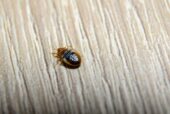Imagine waking up one morning to find your face swollen, your lips puffy, and your hands looking like inflated balloons. It’s not a scene from a horror movie, but a real medical condition called Angioedema. There are little known warning signs that can prevent this condition from happening in the first place. To see the early warning signs and treatments for Angioedema, start an online search now.
What Exactly Is Angioedema?
Angioedema is a condition characterized by sudden, temporary swelling that occurs deeper in the skin. It typically affects areas such as the face, lips, tongue, throat, hands, and feet. The swelling occurs due to the expansion of blood vessels and the accumulation of fluid beneath the skin’s surface. Angioedema can be either hereditary or acquired, with the latter being more common.
Who is Affected by Angioedema?
Angioedema can affect anyone, regardless of age or gender. However, some individuals may have a higher risk of developing the condition. Those with a family history of angioedema are more likely to experience it themselves. Additionally, certain triggers can increase the likelihood of an angioedema episode. These triggers may include allergic reactions to foods, medications, insect bites, or environmental factors such as pollen or animal dander.
What Are The Signs of Angioedema?
Recognizing the signs of angioedema is crucial for early detection and prompt treatment.
- Swelling: Angioedema causes swelling in various parts of the body.1 The most commonly affected areas are the face, particularly the lips and eyelids. However, swelling can also occur in the throat, hands, feet, and genitalia. The swelling can be severe and may cause pain or a tight, itchy sensation.
- Skin discoloration: The affected skin may appear red or pale, depending on the individual and the severity of the condition. The color change is due to the increased blood flow and accumulation of fluid beneath the skin’s surface.
- Itching and hives: Alongside swelling, many people with angioedema experience itching and develop hives. Hives are raised, red or white welts that appear on the skin and can be itchy or painful.
- Difficulty breathing or swallowing: In some cases, angioedema can affect the airways or throat, leading to difficulty breathing or swallowing. This can be a medical emergency and requires immediate medical attention.
Treatments for Angioedema
The treatment of angioedema depends on the underlying cause and the severity of the symptoms.
- Antihistamines: Are often prescribed to relieve the itching and reduce the swelling associated with angioedema. They work by blocking the release of histamines, which are chemicals responsible for allergic reactions.
- Corticosteroids: In more severe cases, corticosteroids may be prescribed to reduce inflammation and swelling. These medications are usually taken orally or administered through injections.
- Epinephrine: It is a fast-acting medication used to treat severe angioedema episodes that involve the airways.2 It works by constricting blood vessels and reducing swelling, thereby improving breathing.
- Identifying and avoiding triggers: If your angioedema is triggered by specific allergens or substances, it is important to identify and avoid them. This may involve making dietary changes, avoiding certain medications, or taking precautions in specific environments.
- Emergency measures: If you or someone you know experiences severe difficulty breathing, swelling of the tongue or throat, or other life-threatening symptoms, immediate medical attention is necessary. In such cases, emergency measures like calling for an ambulance or seeking immediate medical care at a hospital are crucial to ensure prompt treatment and prevent complications.
Preventing Angioedema Episodes
While it may not always be possible to prevent angioedema entirely, there are certain measures you can take to minimize the risk of episodes:
- Know your triggers: If you have experienced angioedema in the past, try to identify the triggers that may have caused it. Keep a record of foods, medications, or environmental factors that seem to be associated with your episodes. This knowledge can help you avoid potential triggers in the future.
- Communicate with your healthcare provider: If you have been diagnosed with angioedema, it is important to communicate with your healthcare provider about your condition.3 They can provide guidance on managing your symptoms, recommend appropriate medications, and help you create an emergency action plan.
- Carry necessary medications: If you have a known history of angioedema, it is advisable to carry antihistamines, corticosteroids, or other prescribed medications with you at all times. This ensures that you have immediate access to treatment in case of an episode.
- Educate family, friends, and coworkers: Inform those close to you about your condition and what to do in case of an emergency. Teach them how to recognize the signs of angioedema and the importance of seeking medical help promptly.
Should You Be Seeking Medical Help?
If you experience symptoms of angioedema, it is crucial to seek medical help. Contact your healthcare provider or go to the nearest emergency room if you experience any of the following:
- Severe difficulty breathing or swallowing
- Rapid swelling of the lips, tongue, or throat
- Fainting or dizziness
- Chest pain or tightness
- Hives or rash spreading rapidly
- Persistent or worsening symptoms despite taking prescribed medications
Find Treatment For Angioedema
Taking preventive measures, identifying triggers, and having a plan in place can help minimize the risk of angioedema episodes. If you or someone you know experiences severe symptoms, it is important to seek immediate medical help. By staying informed and proactive, you can effectively manage angioedema and lead a healthy, fulfilling life. To see the early warning signs and treatments for Angioedema, start an online search now.
References:





